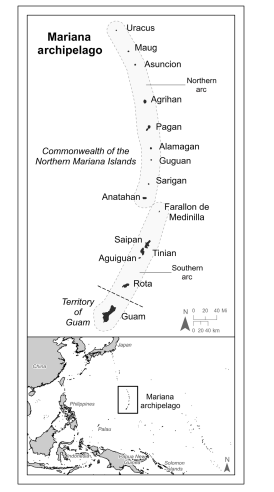
Accurate baseline data for wildlife populations are important to track trends of these
populations over time and to identify threats to their long-term persistence. Aims. We aimed toassess the status and distribution of the little studied megapode (Megapodius lape rouse laperouse) across the Mariana Islands. Methods. Using passive and call playback facilitated surveys in 2008 through 2010, we employed point–transect distance sampling to assess island-level and archipelago wide status of this megapode. To assess conservation needs, we defined human presence as the current, recent, or intermittent occurrence of humans on islands. Key results. We recorded 657 megapode detections and estimated an archipelago level abundance of 11,542 individuals (95% CI: 5456–17,623) from 699 sampling points across 10 islands. Three islands supported 86% of the megapode population, but cumulatively comprise only 2%ofthe archipelago’s land area. Conclusions. Micronesian Megapodes preferred native forest. Human presence and the availability of native forest may limit their abundance and distribution in the Mariana Islands. Although the probability of detecting megapodes was significantly greater on islands without high human presence, significantly more detections were recorded in forests with dense or closed understory on those islands that supported greater human populations. Implications. Given their status and confined distribution in the Mariana Islands, additional
studies investigating megapode incubation sites and movement within and between islands would provide fundamental information on megapode ecology and enhance conservation efforts. Continued and expanded ungulate removal, predator control, and habitat restoration would further enhance the likelihood of megapode persistence in the archipelago.












